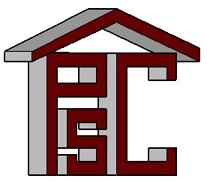A normal home inspection covers nine key areas, but don’t let that idea turn you away. Those nine key areas encompass more than fifty different items in the house. Let’s go over the basics of a home inspection so you can see the detail in which we view the home here at Prime Spec Consulting.
Structure
The structural inspection includes the foundation, floors, walls, columns, ceilings, roof, and attic. We look for anything that looks abnormal, termites, insect infestation, wood rot, and many other potentially dangerous issues. Here’s a great story about finding bees in the walls of a home during an inspection. (link http://primespecconsulting.com/finding-bees-in-house-walls-during-home-inspection/ )
Exterior
The exterior inspection includes wall cladding, flashing, trim, exterior doors, windows, patios, stairs, balconies, railings, attached garages or carports, sidewalks, driveways, property grading, and retaining walls. Sellers often fail to mention issues such as poor drainage in the driveway or yard unless they’re specifically asked about those issues. Improper grading leads to washout during heavy rains, and damage to retaining walls is imminent in that situation. Here’s a story about how grade also affects foundation, crawl spaces and basements. (link http://primespecconsulting.com/proper-grading-needed-around-house-foundation/ )
Roofing
The roofing inspection covers roofing materials, roof drainage, flashing, skylights, and roof penetrations. Any type of roof penetration has the potential to create a leak. Flashing was inspected initially as part of the exterior of the home. It is inspected once again, and more thoroughly, during the roofing inspection.
Plumbing
The plumbing inspection covers the water supply system and fixtures, drains, wastes, vents, water heater, and fuel storage and distribution systems. Inspection of the water heater does not guarantee it will be problem-free in the future.
Electrical Systems
The electrical systems inspection covers the service entrance, panels, branch circuits, operation of outlets and lights, and the operation of ground fault circuit interrupters. Ground fault circuit interrupters, or GFCIs, monitor the electricity flowing in a circuit to sense any loss of current. A properly working electrical system reduces the chance of electrical fire due to faulty systems.
HVAC
The HVAC inspection includes everything directly connected to the HVAC unit including heating and cooling equipment, ducts, vents, automatic safety controls, and chimneys. The heating and cooling unit is tested to ensure that both the heat and the cooling work properly the day of the inspection, and that all vents and safety controls are currently working as intended.
Interior
The interior inspection includes everything on the inside of the home, including walls, ceilings, floors, interior doors, windows, stairs, balconies, railing, counter tops, cabinets, and separation provisions such as those between the house and garage.
Insulation and Ventilation
The insulation and ventilation inspection does more than inspect and verify the type and depth of insulation in the home. It also includes vapor retarders, attic and foundation ventilation, kitchen and bathroom venting, and dryer venting.
Appliances
The appliance inspection includes all major appliances throughout the house, including the range, oven, cook top, dishwasher, garbage disposal, range hood, microwave, and trash compactor. Please remember that appliance inspection does not ensure long-term functionality of the appliance. Please read below.
Inspection Does Not Prevent Future Problems
Appliances are tricky things. One day they work perfectly and the next they’re broken. Unfortunately an appliance that works perfectly for the inspection isn’t guaranteed to work properly in the long run. The purpose of the home inspection is to ensure that the home is structurally safe, and appliances are working properly the day of inspection.


Sorry, comments are closed for this post.